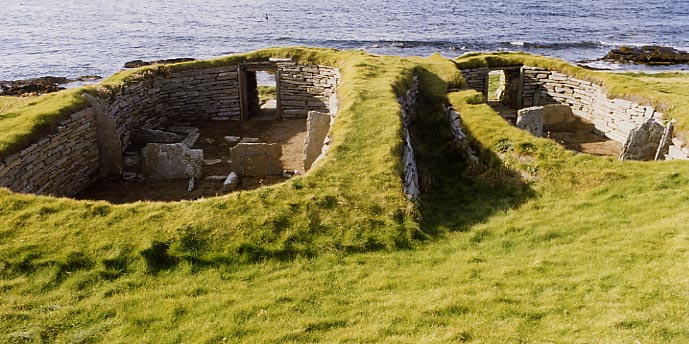
The two structures at the Knap - photograph by Douglas Hourston
Knap of Howar
Papa Westray's most famous monument, in the care of Historic Scotland (see also the tombs on the Holm of Papay, a small island off Papa Westray). These two oblong stone built houses, preserved by wind blown sand are the earliest standing North European dwellings known, dating back to around 3800 years BC. They are considered to represent a Neolithic farmstead. They were excavated in the 1930s and 1970s.
The walls reach a maximum of 1.6 metres with the largest encompassing an area of 10 metres by 5.0 metres and the smaller 7.5 metres by 3 metres, with upright slabs dividing them into rooms. In many ways similar to Skara Brae on mainland Orkney, the furniture and fittings included hearths, pits, built-in cupboards and stone benches.
They were occupied by neolithic farmers for 500 years. From midden remains the mode of subsistence was primarily pastoral rearing cattle, sheep and pigs. There is some evidence of cereal cultivation and harvesting of fish and shell fish. Unstan ware links the site to stalled cairns rather than settlements where grooved ware was in use such as Skara Brae.
Entrance to the houses is by low, narrow passages giving shelter from the Orkney weather. The houses are also linked by an internal passageway - watch your heads!